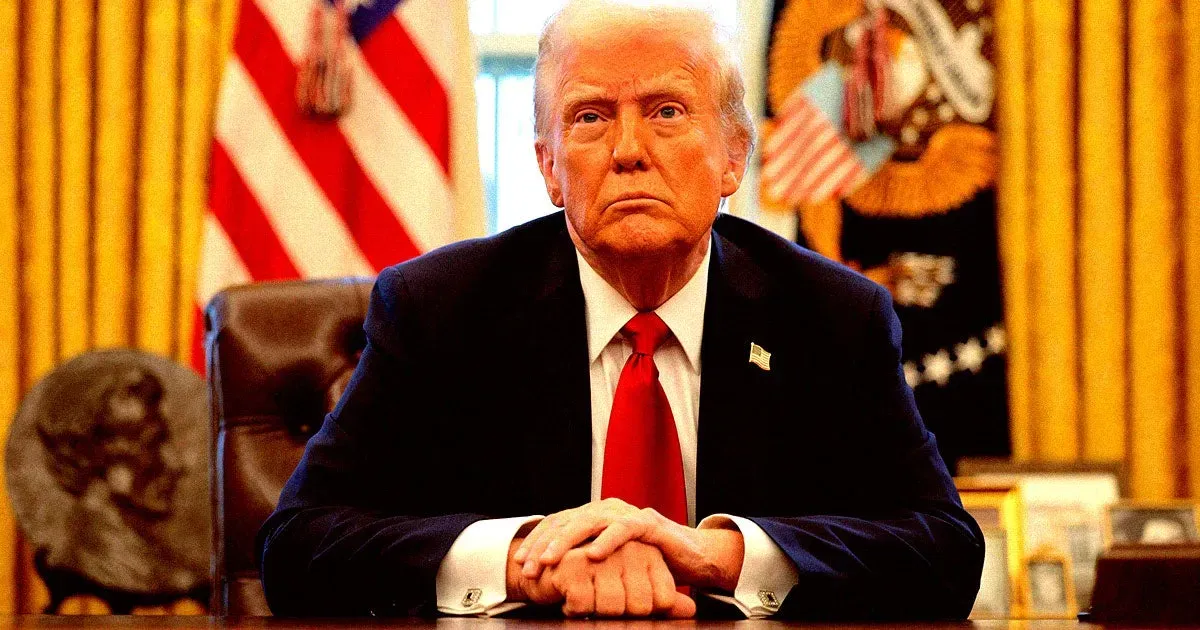In the rapidly evolving landscape of industry, Trump tariffs and AI automation emerge as two pivotal forces reshaping the workforce. President Trump’s push for protective tariffs aims to stimulate domestic job growth by revitalizing local manufacturing, particularly in struggling sectors such as automotive. However, economists warn that these tariffs could inadvertently accelerate the adoption of artificial intelligence and automation technologies, potentially undermining the job market they aim to protect. As companies face higher labor costs in the U.S., many may turn to AI in manufacturing and robotics to maintain competitiveness, leading to a shift rather than a creation of jobs. The economic impact of tariffs could thus create a paradox where initiatives designed to bolster employment might result in greater unemployment due to automation and advancements in technology.
The intersection of trade policies and technological innovation presents a complex scenario for the U.S. labor market. With President Trump’s recent tariffs aimed at reviving domestic production, there are concerns that such measures might inadvertently catalyze a surge in automation technologies. By increasing operational costs, companies might find the economic incentive to invest in robotics and automation rather than maintain a human workforce. As the dialogue around automation and jobs intensifies, it is essential to examine how tariffs effect on jobs could lead to greater reliance on artificial intelligence and machinery, especially in manufacturing sectors. This ongoing transformation underscores the critical need to address how changes in trade policy influence employment dynamics amid the rise of AI.
The Impact of Trump Tariffs on Job Creation
President Trump’s administration has positioned tariffs as a means to revitalize the manufacturing sector in the United States. By increasing tariffs on foreign imports, particularly on goods related to automotive production, the expectation is to bring jobs back home. Proponents argue that these tariffs will create a conducive environment for businesses to reopen factories and hire American workers, thus contributing to job growth in a struggling economy. However, significant skepticism lingers among economists about whether tariffs will indeed lead to substantial job creation or merely mask deeper economic inefficiencies.
Economic studies indicate that tariffs often lead to inflated production costs, which could counteract job gains. Relying on historical data, analysts point out that previous attempts to incentivize job growth through tariffs have sometimes resulted in job losses, particularly in sectors subjected to high tariffs. Instead of fostering a resurgence in employment, companies may opt for other alternatives, including automation, to offset the impact of higher costs, thus diminishing the claimed benefits of bringing jobs back to the United States.
AI Automation: The Future of Manufacturing
The relationship between artificial intelligence and manufacturing is evolving, and its implications could drastically reshape the workforce. As companies face increased costs due to Trump’s tariffs, many might turn to AI and robotics as viable solutions. The potential for AI to enhance operational efficiency makes it an attractive option for businesses aiming to maintain profit margins in a newly challenging economic landscape. Instead of expanding their labor force, firms might choose to invest in technology that can automate processes and reduce their reliance on human labor.
While AI has the potential to improve productivity, the urgency to automate could lead to a societal shift in employment opportunities. According to experts, as tariffs inflate production costs, businesses are likely to adopt AI solutions not only to control expenses but also to optimize speed and efficiency. Yet, this transition demands caution, as the drive toward automation might widen the employment gap in sectors historically reliant on human labor.
Economical Consequences of Tariffs on Employment
The economic effects of tariffs extend beyond mere job numbers, influencing global supply chains and import costs. As tariffs increase, the cost of raw materials rises, leading companies to rethink their operational strategies. The expectation that these tariffs would directly lead to an increase in American jobs faces significant challenges when examined closely. Companies might find themselves favoring automation over hiring additional workers because the long-term cost of robots can be more appealing than constantly increasing labor costs.
Nobel laureate Daron Acemoglu suggests that manufacturers might be forced to relocate some operations back to the U.S. but would greatly prefer doing so through technological advancements rather than human labor expansion. Thus, while tariffs may temporarily boost local industries, the broader implications for job availability could lean increasingly towards reliance on AI and automation as primary workforce solutions.
The Intersection of Robotics and Employment
As automation technologies advance, the integration of robotics into manufacturing environments continues to evolve. Companies like Boston Dynamics are spearheading innovations that enable robots to perform complex tasks, thereby reducing the need for large teams of human workers. This shift can potentially streamline operations, but it also raises important questions about the future of jobs in the manufacturing sector. As robots become more adept, the potential for job displacement grows, transforming the current labor landscape and threatening existing employment opportunities.
The gradual adaptation of robots may also indicate that organizations are willing to invest heavily in technology over human capital. Economists warn that while this may offer short-term efficiencies and cost savings, it could create a larger issue of job scarcity in sectors where automation takes root. Thus, understanding the balance between embracing robotics for efficiency while ensuring ample employment opportunities remains critical.
Economic Insights into Trump’s Tariffs
While Trump’s tariffs aim to foster a resurgence in American manufacturing, the underlying economic logic raises serious concerns. The expectation for companies to shift production back to the U.S. overlooks the profound impact higher tariffs will have on supply chains and overall economic efficiency. If businesses are compelled to raise prices due to tariffs, they may struggle to compete in the global market, potentially leading to job losses rather than increases.
Additionally, the complexities of global trade networks mean that tariffs may provoke unintended consequences. By disrupting established supply chains, tariffs could elevate production costs, leading firms to invest in AI and robotics for more efficient operations. In light of these developments, tariffs may not only fail to create jobs but could paradoxically expedite the trend toward automation in American manufacturing.
The Role of AI in Future Labor Markets
As artificial intelligence technologies mature, there’s a growing discourse concerning their role in the labor market. Policymakers and economists are divided on the potential outcomes of AI integration. Advocates argue that AI can augment human abilities and lead to an increase in high-skilled employment opportunities, while critics fear that automation will primarily lead to job reduction, especially in traditional manufacturing roles. This dichotomy illustrates the complexities of implementing AI in work settings amid fluctuating economic conditions influenced by tariffs.
If companies prioritize automation as a strategy to run their businesses more effectively under the pressure of tariffs, the focus on jobs may shift considerably. The challenge lies in creating a workforce capable of adapting to an AI-enhanced economy, emphasizing the need for reskilling and vocational training programs that align with future industry demands. Consequently, discussions surrounding AI’s role must consider not just the technology’s capabilities but also its broader societal impact.
Challenges of Implementing AI in Manufacturing
Although AI holds promise for revolutionizing the manufacturing sector, several challenges remain in its implementation. From the initial investment in technology to retraining an existing workforce, companies may hesitate to adopt AI when faced with the uncertainty brought about by tariffs. While there is potential for productivity gains, the fear of increased costs could inhibit the shift toward automation, leading firms to either delay or abandon plans to incorporate advanced technologies.
Moreover, there is a concern about integrating AI alongside current human labor. Experts caution that simply replacing jobs with robots does not guarantee enhanced productivity; in fact, it might lead to operational disruptions and increases in unemployment. Hence, it is crucial for businesses to strategize how to effectively integrate AI without sacrificing job security for workers.
Historical Perspectives on Automation and Workforce Changes
Looking at the historical context of technological advancements, we see cycles of job displacement and creation. In previous industrial revolutions, automation led to significant job losses in certain sectors yet simultaneously paved the way for new fields and employment opportunities. This pattern raises pertinent questions regarding whether current economic policies, like the tariffs introduced by the Trump administration, will create similar outcomes as industries transition towards AI and automation.
Labor historian Brian Merchant notes that historical trends show that economic downturns often prompt employers to seize opportunities for automation. Despite the hope for a more balanced approach to human labor amid AI advancements, the likelihood of companies undermining labor protections remains a genuine concern. Understanding past experiences with automation and jobs can help navigate the future landscape of work in America, especially as tariffs and AI technologies reshape industry norms.
Understanding the Tariffs’ Impact on Supply Chain Dynamics
Tariffs imposed by the Trump administration have a cascading effect on supply chain dynamics across multiple industries. As foreign goods become more expensive due to tariffs, many companies face escalating operational costs. This increase can force manufacturers to reconsider their supply chains, often leading them to invest heavily in automation technologies as a way to mitigate costs and maintain competitiveness in a volatile market.
As tariffs potentially drive a shift toward AI and robotics, firms may reassess their dependencies on global trade networks and traditional labor forces. This reconfiguration is critical, as businesses may focus on streamlining efficiency rather than bolstering employment. The greater reliance on AI solutions could indicate a profound shift in how manufacturing is approached in the U.S., altering long-standing dynamics between labor and technology.
Frequently Asked Questions
What impact do Trump tariffs have on jobs and AI automation?
Trump’s tariffs are intended to revive U.S. manufacturing jobs, but experts warn they may instead accelerate AI automation. With rising labor costs in the U.S. due to tariffs, companies are more likely to invest in robots and AI solutions, reducing the need for human labor. Historical data suggests that past tariffs did not lead to significant job creation, and the trend may continue as businesses seek to optimize their operations through automation.
How do tariffs affect the economic landscape of automation and jobs?
Tariffs can have a disruptive economic impact, leading to higher production costs and potentially limiting companies’ willingness to invest in job creation. Instead, these economic pressures might drive firms to increase their use of AI and robotics to maintain profitability. Consequently, while tariffs aim to protect jobs, they may paradoxically lead to lower employment due to heightened automation.
Are Trump tariffs and AI advancements pushing manufacturing towards automation?
Yes, the combination of Trump tariffs and recent advancements in AI is pushing manufacturing toward automation. As tariffs raise the cost of labor in the U.S., companies may find it more economically viable to automate processes with AI and robotics, reducing reliance on human workers. This shift could reshape the job market, favoring automation technologies over traditional manufacturing jobs.
Will AI in manufacturing benefit workers despite Trump tariffs?
While the Trump administration suggests that AI in manufacturing will enhance productivity and benefit workers, historical patterns indicate that new technologies like AI often lead to job reductions. During economic downturns, companies typically seize the chance to automate, potentially undermining labor protections rather than enhancing job opportunities.
What lessons can be learned from past tariffs regarding automation and employment?
Previous tariffs, such as those imposed in 2018, indicate that instead of boosting employment, they can lead to job losses due to increased production costs and diminished competitiveness. As companies adapt to tariffs, they may opt to invest in automation rather than hiring, reinforcing the notion that tariffs might not achieve their intended job creation goals.
How do robotics and employment shape the future of U.S. jobs amidst tariffs?
The future of U.S. jobs is likely to be influenced by the dual forces of tariffs and robotics. As tariffs raise production costs, firms may turn to robotics and AI for efficiency, potentially reducing the number of available jobs. This could shift the landscape of employment in manufacturing, emphasizing the need for workers to adapt to an increasingly automated environment.
What role does the economic impact of tariffs play in job creation or loss?
The economic impact of tariffs tends to complicate job creation efforts. While the intention is to foster domestic employment, the resulting higher costs can deter investment in workforce expansion. Instead, companies may lean towards automation, thus diminishing overall job availability. Therefore, tariffs may inadvertently lead to a reduction in jobs rather than the hoped-for increase.
Could advances in AI mitigate the negative effects of Trump tariffs on jobs?
While advances in AI may offer innovative solutions for efficiency, they do not necessarily counteract the negative effects of Trump tariffs on jobs. As companies invest in AI and automation to cope with higher labor costs, this could further displace workers rather than mitigate job losses. The ultimate impact depends on how businesses choose to balance technology investment and workforce needs.
| Key Points |
|---|
| Trump’s tariffs aim to bring back manufacturing jobs to the U.S. by making imports more expensive, thereby encouraging local production. |
| Economists warn that tariffs may instead accelerate the adoption of AI and robotics, as higher U.S. labor costs push companies to automate. |
| Short-term impacts of tariffs might not lead to extensive automation due to significant investment requirements and economic uncertainty. |
| Historically, tariffs have led to job losses and higher production costs, suggesting that this round may not result in a positive outcome for workers. |
| Advancements in AI and robotics mean that machines are becoming more capable and cheaper to produce, potentially changing the labor landscape. |
| While the Trump administration hopes AI will benefit U.S. workers, there is skepticism based on past technological disruptions in industry. |
Summary
Trump tariffs and AI automation are intricately linked in their potential impacts on the U.S. job market. While the intention behind Trump’s tariffs is to revitalize domestic manufacturing by bringing jobs back to America, the reality may lean toward increased automation driven by advances in AI and robotics. As companies face higher costs associated with U.S. labor, many might opt for automation as a solution, undermining job recovery efforts. It’s crucial for policymakers to consider these dynamics to avoid repeating past mistakes that led to job losses during previous tariff implementations.



